How NGSS and CCSS for ELA/Literacy Address Argument
By Cindy Workosky
Posted on 2017-07-25
In the summer of 2015, I observed an elementary science teacher from an NGSS-adopted state who made a presentation to her cohort of close to 100 K–12 science teacher leaders and administrators from schools, districts, and the state. After presenting her instruction on a physical science unit with 2nd-grade students, she gave her students the following assignment: “Write your opinion on . . . (the science topic).”
As a science educator, I was struck by the presenter’s use of “opinion” in science instruction. In an effort to unpack my misgivings, I decided to take a quick look at what the new science standards had to say about “opinion” in relation to argument. First, I consulted the Framework (NRC 2012), which states, “[y]oung students can begin by constructing an argument” and “begin to distinguish evidence from opinion” (p. 73). For example, the performance expectation K-ESS2-2 in the Next Generation Science Standards (NGSS) states: Construct an argument supported by evidence for how plants and animals (including humans) can change the environment to meet their needs.
I then turned my attention to the Common Core State Standards (CCSS) for ELA/literacy. To my surprise, I discovered that “evidence” is introduced for the first time and used only once in grade 3, while “claim” is introduced for the first time and used only once in grade 5. In addition, “reasons” is used throughout K–5 and “reasoning” is introduced for the first time in grade 6. Finally, in grades 6–12, “argument” is used along with evidence, claim, and reasons or reasoning. The CCSS Appendix A (NGA Center and CCSSO 2010), which provides the research base for the CCSS, states, “Although young children are not able to produce fully developed logical arguments . . . In grades K–5, the term ‘opinion’ is used to refer to this developing form of argument” (p. 23).
A key instructional shift in the CCSS for ELA/literacy and the NGSS involves making connections across subject areas, which more accurately represent the reality of teachers and students who are trying to make meaning of multiple subject areas that have traditionally been treated in silos. One disciplinary practice that is emphasized consistently across the CCSS for ELA/literacy and mathematics and the NGSS is argument. But to what extent do subject area educators have a common understanding of argument?
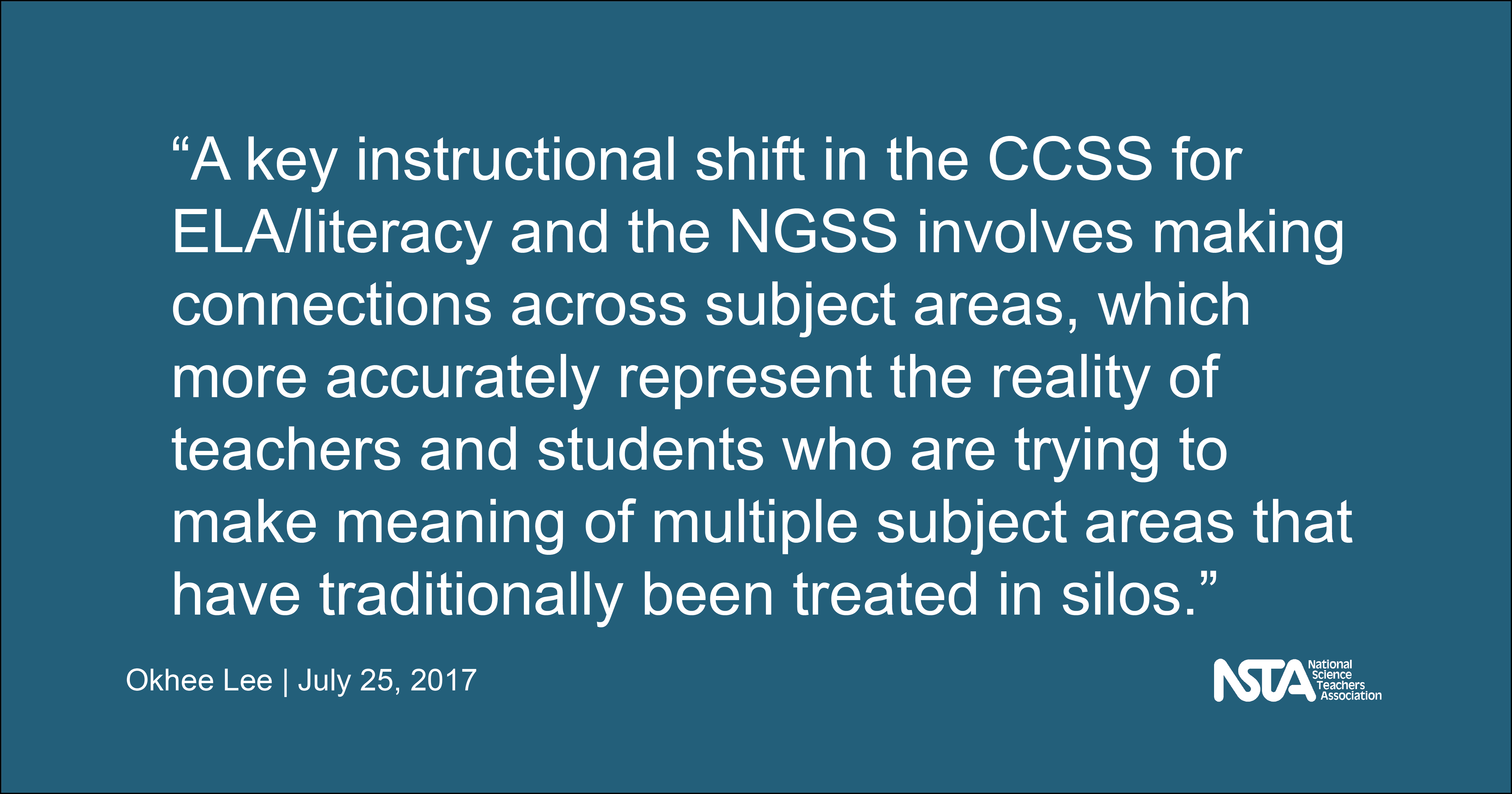
In preparing a recent research article for publication (Lee 2017), I attempted to address this question more systematically. As both the CCSS for ELA/literacy and the NGSS claim to be research-based, reviewers of the journal encouraged me to look into relevant literature in ELA/literacy and science education with the aim of identifying conceptual sources of convergences and discrepancies between these two sets of standards. Eventually, my analysis of the two bodies of research literature and the two sets of standards in ELA/literacy and science education focused on (1) what counts as argument (i.e., disciplinary norms) and (2) when children are capable of engaging in argument (i.e., developmental progressions). Key findings are summarized as follows:
- Although the CCSS for ELA/literacy include many purposes of arguments, including persuasive arguments, they emphasize logical arguments in relation to college and career readiness.
- The description of argument in science that appears in the CCSS for ELA/literacy is comparable to how the Framework (NRC 2012) and the NGSS describe argument.
- The two sets of standards and relevant bodies of literature in ELA/literacy and science education acknowledge that what counts as argument or evidence differs across disciplines, but none offer explicit guidance on what these differences entail.
- The two sets of standards and relevant bodies of literature in ELA/literacy and science education present differing perspectives on K-5 students’ ability to engage in argument, as described above.
I support the CCSS for ELA/literacy and the NGSS in their efforts to make connections across subject areas and to highlight synergy and shared responsibilities among subject area educators. While capitalizing on convergences, it is equally important to reconcile discrepancies between different sets of standards and between different bodies of research literature. As new content standards are being implemented, the education community should attend to discrepancies between and across subject areas and commit to addressing such discrepancies. As a point of departure, a convening of stakeholders to discuss and resolve the discrepancies involving argument is one possible step to take, which could lead to further research and policy initiatives.
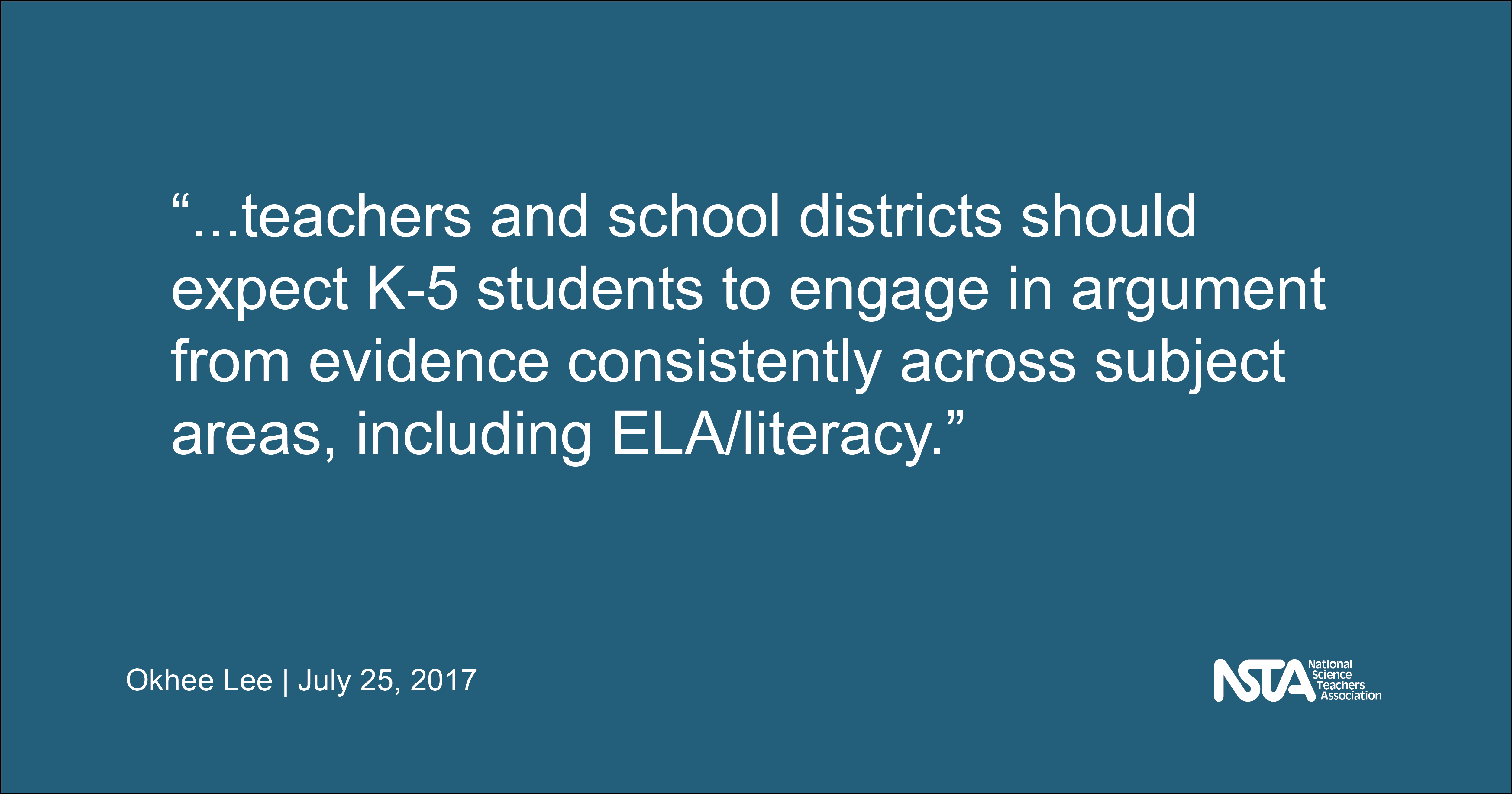
With the adoption of the CCSS and the NGSS across states, the responsibility of implementing these new standards falls primarily on classroom teachers. They are faced with limited information about what counts as argument across ELA/literacy and science education. Furthermore, they must contend with discrepant information about when children are able to engage in argument. As the NGSS are aligned closely with the grade-by-grade standards in the CCSS, such discrepancies have practical implications for classroom instruction and assessment. I was relieved and delighted when two leaders involved in writing the CCSS for ELA/literacy deferred to “research in science indicating young children could form arguments” and suggested that “as states are revising standards, they should take into consideration new research that’s out there” (Zubrzycki, 2017). In a similar manner, teachers and school districts should expect K-5 students to engage in argument from evidence consistently across subject areas, including ELA/literacy.
References
Lee, O. 2017. Common Core State Standards for ELA/literacy and Next Generation Science Standards: Convergences and discrepancies using argument as an example. Educational Researcher, 46(2), 90-102.
National Governors Association Center for Best Practices (NGA Center) and Council of Chief State School Officers (CCSSO). 2010. Common Core State Standards for English language arts and literacy in history/social studies, science, and technical subjects. Appendix A: Research supporting key elements of the standards, glossary of key terms. Retrieved from http://www.corestandards.org/assets/Appendix_A.pdf
National Research Council (NRC). 2012. A framework for K-12 science education: Practices, crosscutting concepts, and core ideas. Washington, DC: National Academies Press.
Zubrzycki, J. 2017. In elementary school science, what’s at stake when we call an ‘argument’ an ‘opinion’? Education Week, http://blogs.edweek.org/edweek/curriculum/2017/04/science_standards_common_core.html

Okhee Lee
Okhee Lee is a professor in the Steinhardt School of Culture, Education, and Human Development at New York University. She was a member of the NGSS writing team and served as leader for the NGSS Diversity and Equity Team. She is currently developing NGSS-aligned instructional materials for students, especially English learners, in fifth grade.
The mission of NSTA is to promote excellence and innovation in science teaching and learning for all.
Future NSTA Conferences
2017 Fall Conferences
National Conference
In the summer of 2015, I observed an elementary science teacher from an NGSS-adopted state who made a presentation to her cohort of close to 100 K–12 science teacher leaders and administrators from schools, districts, and the state. After presenting her instruction on a physical science unit with 2nd-grade students, she gave her students the following assignment: “Write your opinion on . . . (the science topic).”
Using Claim, Evidence, and Reasoning (CER) Strategy to Improve Student Learning
By Cindy Workosky
Posted on 2017-07-25
This past school year, I used claim, evidence, reasoning (CER) statements to show three-dimensional learning in my classroom. Several tools are available for doing this, but the one my students like is the CER Graphic Organizer and Transition Words List developed by Sandra Yellenberg.
My students like how this graphic organizer helped them organize their thoughts before writing their CER paragraphs. The first few times, we went through the process together to co-develop CER paragraphs. Sometimes we would develop a whole paragraph or a sentence to help explain a phenomenon. Co-developing the statements helped students feel more comfortable using the tool later on.
As students continued to use the tool, their statements gained complexity. Anytime students were asked to explain what they found out, they always used this tool and accompanying transition word bank. In several biology activities, we used the organizer to defend claims based on genetic analysis. In chemistry, we used the organizer to explain what the best way for organizing elements on the periodic table was. In physical science, we used a modified version of the organizer to develop correlations among kinetic and potential energy, speed, and friction using PhET’s Skate Park basics simulation. I also used the organizer in environmental science after having students do the activity Earth’s Dynamically Changing Climate, to explain how the eight pieces of evidence they examine help justify the claim that Earth’s climate is changing.
In the example below, students developed a claim to the question Who’s the Father?, an Inquiry-based Curriculum Enhancement activity by Indiana University. The paragraph the student team developed from their filled-in C-E-R Graphic Organizer follows:
In the case of who’s the father of Katie and David, we believe Mr. Ingram is the father. In the first place, Katie has four alleles matching with Mr. Ingram. She has only three alleles in common with Mr. Polacek. Coupled with David who has five alleles in common with Mr. Ingram and two alleles in common with Mr. Polacek. Also, Katie has three alleles in common with Mrs. Ingram. David has four alleles in common with Mrs. Ingram. Mr. and Mrs. Ingram are the parents of Katie and David because they have the most matching alleles.
In another biology example, students examined more complicated genetic analysis to determine who should get the inheritance. They had to develop a claim about who was the most likely candidate to be the daughter of Harold P. Smithson in another Inquiry-based Curriculum Enhancement activity by Indiana University. Students analyzed several different samples of loci with varying probabilities of matching for blood, as well as a hair sample. The paragraph a student team developed from their filled-in C-E-R Graphic Organizer appears below:
Candidate two is most likely the daughter (of) Harold P. Smithson. First we looked at the blood samples. Candidate two and four both have five matching alleles with Smithson. Candidate(s) one, three, and five only have two. Locus B has a low probability (of matching). For example, Locus B has a probability of 1/22,500. Even with this low probability (candidate) two matches twice. Also candidate two has at least one allele matching at every locus. Also we looked at a hair sample. Two has the most matching alleles with the hair sample, which was nine alleles. Candidate two has a total of 14 matching alleles with the blood and hair samples. In the final analysis candidate two is most likely the daughter.
Not only are students writing in science, focusing on the NGSS science and engineering practice of engaging in argument from evidence, but they are also using CCSS ELA writing standards, such as “Write arguments to support claims in an analysis of substantive topics or texts, using valid reasoning and relevant and sufficient evidence.” I found that after using the C-E-R Graphic Organizer to help students develop their paragraphs, their explanations were better developed and focused on using evidence to back up their claim.
Students needed more guidance in using transition words. They often repeated the same words to start their sentences and were unsure about which grouping of words to use with their evidence. I worked with students, through modeling, discussion, and individual check-ins, to help them determine which group of transition words to choose. In the future, giving students an abbreviated transition word list based on what type of question we are trying to answer should help alleviate some of the confusion with this piece. Students noted that the tool helped them develop paragraphs to prove a claim in other classes.
Since I work at a school-within-a-school, I was able to share the graphic organizer with the English teacher so we could use the same tool to help students develop arguments using evidence in English and science courses.
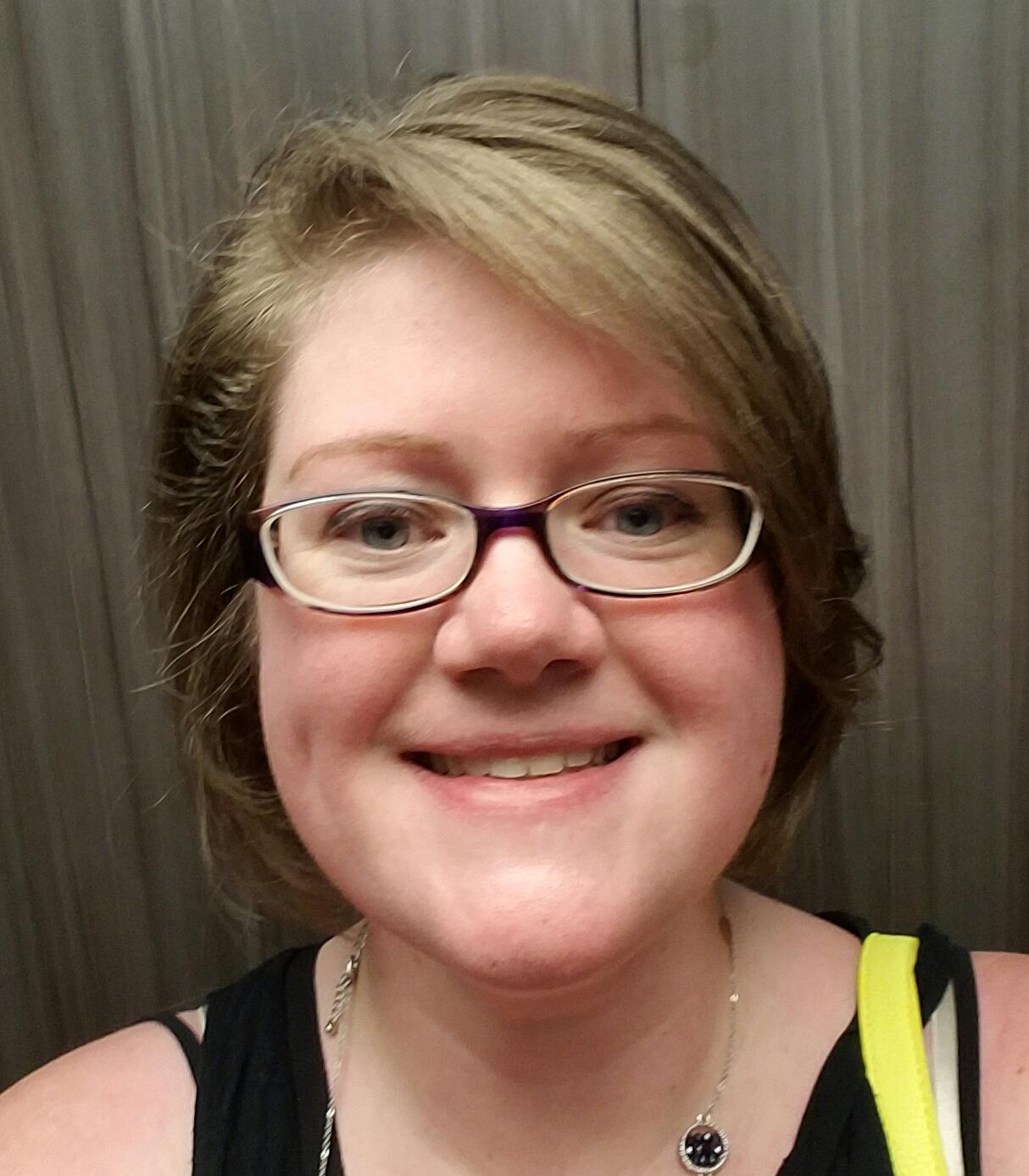
Nicole Vick
Nicole Vick is a high school science teacher in Galesburg, Illinois, and an NGSS@NSTA Curator. She has taught all content areas of science and holds degrees in biology and environmental science education. Vick is a Regional Director and serves as the Professional Development Leader for High School Earth and Space Science for the Illinois Science Teachers Association and as District XII Director for the National Science Teachers Association. She enjoys transitioning her classes to three-dimensional instruction and providing professional development to teachers throughout Illinois.
The mission of NSTA is to promote excellence and innovation in science teaching and learning for all.
Future NSTA Conferences
2017 Fall Conferences
National Conference
This past school year, I used claim, evidence, reasoning (CER) statements to show three-dimensional learning in my classroom. Several tools are available for doing this, but the one my students like is the CER Graphic Organizer and Transition Words List developed by Sandra Yellenberg.
You Teach What? I’m So Sorry! Building a Better Body and Building Better Argumentation
By Cindy Workosky
Posted on 2017-07-25
I am always amazed at the looks on people’s faces when I tell them I teach middle school. They seem to pity me for having a position I chose and love! They inform me that middle school “tween-agers” are argumentative, stubborn, and at times, adamant about whatever they set their minds to. But I smile because I have the best job in the world!
The secret about my argumentative middle schoolers is that middle school is a prime time to teach students what argumentation really is and how it is used every day in decision-making processes. Middle schoolers make claims all the time, and if we can harness their passion to make statements, then we have implemented a very powerful tool indeed. When and how did I implement argumentation as an NGSS Science and Engineering Practice (SEP) in my classroom? I started slowly and used the progression of the SEPs to construct “articles of argumentation” to help guide our learning processes.
Article 1: Engage With Evidence, Embrace the Phenomena
The first unit I aligned with NGSS was formerly known as my Human Body unit. I struggled with how to teach body systems as an interconnected system without first having students examine each system individually. I did what many a teacher in my position would do: I googled MS-LS1-3 and started vetting the pages I found. I became inspired by a lesson from betterlesson.com, Human Body 2.0, from Mariana Garcia Serrato. I used her project as my template and centered my storyline around this guiding question: What if we could build a better body?
Gathering Evidence
To form a better body, or body system, students need to examine a perceived weakness in our current model/body. As students brainstormed all the ways our bodies could become better, they quickly realized they needed to investigate the current human body system to engineer a better one. To enhance their understandings, students were given several dissection opportunities, lecture videos, mini-labs that could be checked out, textbook pages and web resources. They had two weeks to construct written models (blogs using their G Suite for Education Glogster accounts) summarizing their understandings. Students then commented on one another’s blogs, asking questions about where they saw limitations. In their comments, students were tasked with evaluating understandings independent of their personal biases and practiced making qualitative/quantitative observations. This gave them an initial opportunity to practice strengthening statements by making them empirical.
Article 2: Stating Supported Claims
When students evaluated one another’s comments, they expressed interest in a specific body system, so I had them choose the body system they thought most needed improvements. Students were placed into body system groups of their choice (they ranked their interest in each body system and were assigned to groups based on ranking and availability), then they revised initial models and constructed a physical model for their “Human Body 2.0.” Students spent an additional week preparing prototypes to be shared with the class. On presentation day, students had to evaluate their models and argue effectiveness and feasibility. (See System Evaluation Sheet.)




Article 3: Pairing the SEP and the CCC
One CCC (Crosscutting Concept) for this particular DCI (Disciplinary Core Idea) is systems and system models. Because the NGSS are interconnected, students are sense making through the combination of content, practices, and overarching crosscutting concepts. Encouraging students to make and revise their models as part of argumentation ensures that they not only understand the benefits of their system, but also its limitations. Argumentation is strengthened through modeling, as it uses a natural feedback loop and allows students to see that argumentation is not a “fight,” but a network of understanding based on evidence. It illustrates that the argumentation process is not linear, and keeps conversations, investigations, and—most importantly to me—wonder ongoing.
Ways I hope to improve this unit in the future
- Implement an anchoring phenomenon before the guiding question;
- Continue to become more familiar with NGSS Screener Tools and rubrics; and
- Increase connectedness. I find students create a better model and argument when they know others will evaluate their model. (If you are interested in having our students evaluate your student’s blogs or vise versa, tweet me at @frizzlerichard.)
So when I am asked on the street, at the pool, or anywhere about my argumentative middle schoolers, I smile. My students know how to argue correctly, and as their science teacher, I couldn’t be more proud!

Meg Richard
Meg Richard is a seventh-grade science teacher at California Trail Middle School in Olathe, Kansas. She has been teaching science since 2010 and is a graduate of Central Methodist University and the University of Central Missouri. In addition to her teaching duties, Meg is excited to be a member of Teaching Channel’s Tch Next Gen Science Squad and to work with the Kansas Department of Education as a Science Trainer. She’s passionate about providing authentic, hands-on science experiences for her students, and she often can’t believe how lucky she is to get to do the best job in the world: Teach! Connect with Richard on Twitter: @frizzlerichard.
Visit NSTA’s NGSS@NSTA Hub for hundreds of vetted classroom resources, professional learning opportunities, publications, ebooks and more; connect with your teacher colleagues on the NGSS listservs (members can sign up here); and join us for discussions around NGSS at an upcoming conference.
The mission of NSTA is to promote excellence and innovation in science teaching and learning for all.
Future NSTA Conferences
2017 Fall Conferences
National Conference
I am always amazed at the looks on people’s faces when I tell them I teach middle school. They seem to pity me for having a position I chose and love! They inform me that middle school “tween-agers” are argumentative, stubborn, and at times, adamant about whatever they set their minds to. But I smile because I have the best job in the world!
NGSS Curriculum Integration—Off on a Tangent!
By Cindy Workosky
Posted on 2017-07-25
The creation of a school garden inspired this fourth-grade unit. All students in the school were responsible for planning the garden, as well as for planting, weeding, and harvesting our crops of tomatoes, pumpkins, and carrots. The harvest was shared with the school cafeteria staff, who prepared salad and dessert bar selections for the students, and our fire department staff, who watered our garden in the summer, providing a community connection. All food scraps were composted, and many seeds were harvested, dried, and saved for use in future gardens.

Judy Hebert and 4th-grade students
The curriculum focus for each grade included the study of specific plant parts. Fourth graders explored how the structure and function of plant leaves would be important for optimum plant growth, a Disciplinary Core Idea focus at this grade level. During their research, students often encountered the term food factories. It was interesting to observe students wondering (on their own!) why that connection existed, then, without prompting, asking questions while they considered potential answers, reflecting NGSS practice.
My students live in an area with large factories that had been staffed by immigrants from their own families. I encouraged students to interview those family members and other relatives to better understand how the factories worked, including the products they made, supplies used in production, and waste that was disposed. Students shared their stories with the class, then wrote journal entries about the parallels between food production of leaves and the manufacturing sites they had observed.
Students were intrigued by the idea that children worked in factories at very young ages, so I introduced the book Kids at Work, which detailed the jobs held by young children, including coal mining, farming, and textile factory work. Child labor laws protecting children from working in dangerous jobs were discussed, and some class groups chose to research the lives that children led before these laws were passed.
During the discussion and journaling activities, I asked the students where most of the factories in their area were located. Students eagerly responded that the factories were all near the river, providing a great example of observing the crosscutting concept of patterns. Next, I asked them to explain, with evidence, why they thought the factories were located near the river. After much discussion, students decided to research reasons for this placement, as they determined that their ideas needed to be supported by more evidence.
Students again interviewed family members, and reviewed (with teacher modeling) the history of the city pertaining to industry. I also included a review of simple machines, focusing on their engineering design, and asked students to again parallel differences between simple machines and the machines used in the manufacturing process in these factories. Students then illustrated how changes made to these machines resulted in enormous gains in production.
As students became more familiar with the manufacturing process, they encountered the term assembly line. As they had done previously with the term food factories, students became interested in creating their own assembly line. They detailed their suggestions for one and shared their ideas with the class. Their practice of planning and carrying out an investigation became a natural progression from their own research.
I asked them to consider these questions: What is the product goal of your assembly line? What materials will be used, and how is waste eliminated? I reviewed the comparisons between raw materials in leaves (CO2, water), light from the Sun, and green material in chloroplasts, and the materials that might be used in the assembly line. This offered another great opportunity to work with patterns and how they influence cause/effect. Students had traveled on such a tangential journey in their research that they needed a refresher on the concept of food production in leaves, since the goal of plant research at all grade levels was the garden’s success . The crosscutting concept of systems and their components was evident during the students’ investigations.
Next, students decided to invest some money (from the PTO fund) to develop craft packets to make Christmas ornaments. They discussed the constraints, most notably the cost! In the gym, all 60 fourth graders were divided into groups, and they passed the packet contents down their assembly lines, with each child responsible for one part of the craft creation. Students at the end of the line wore plastic gloves, examined each piece, and determined whether it needed to be returned for revision. Their quality control was impressive and provided evidence for determining criteria for success!
Students created more than 200 ornaments, which were sold at the annual holiday musical event. Student groups then calculated profits, determined the cost of repaying the PTO investment, then shared their mathematical findings with the class. They presented creative ideas on ways their profits could be spent, with debate and visuals used as enticements. To demonstrate final factory/leaf food production integration, I had students read the book Charlie and the Chocolate Factory and journal their ideas for a story called “Charlie and the Leaf Factory.” Their stories provided the connection between literacy and the crosscutting concept of understanding the behavior of systems.
This leaf-function journey allowed students to engage in three-dimensional learning every day. Students observed patterns in nature, constructed explanations of the relationships they observed, then engaged in all aspects of curriculum integration. Social studies, math, and literacy were seamlessly included in their studies. They were so involved and engaged that they shared their findings with students in other grades. Third graders then asked if they could “have fun” (their words!) learning the same material next year. Success!
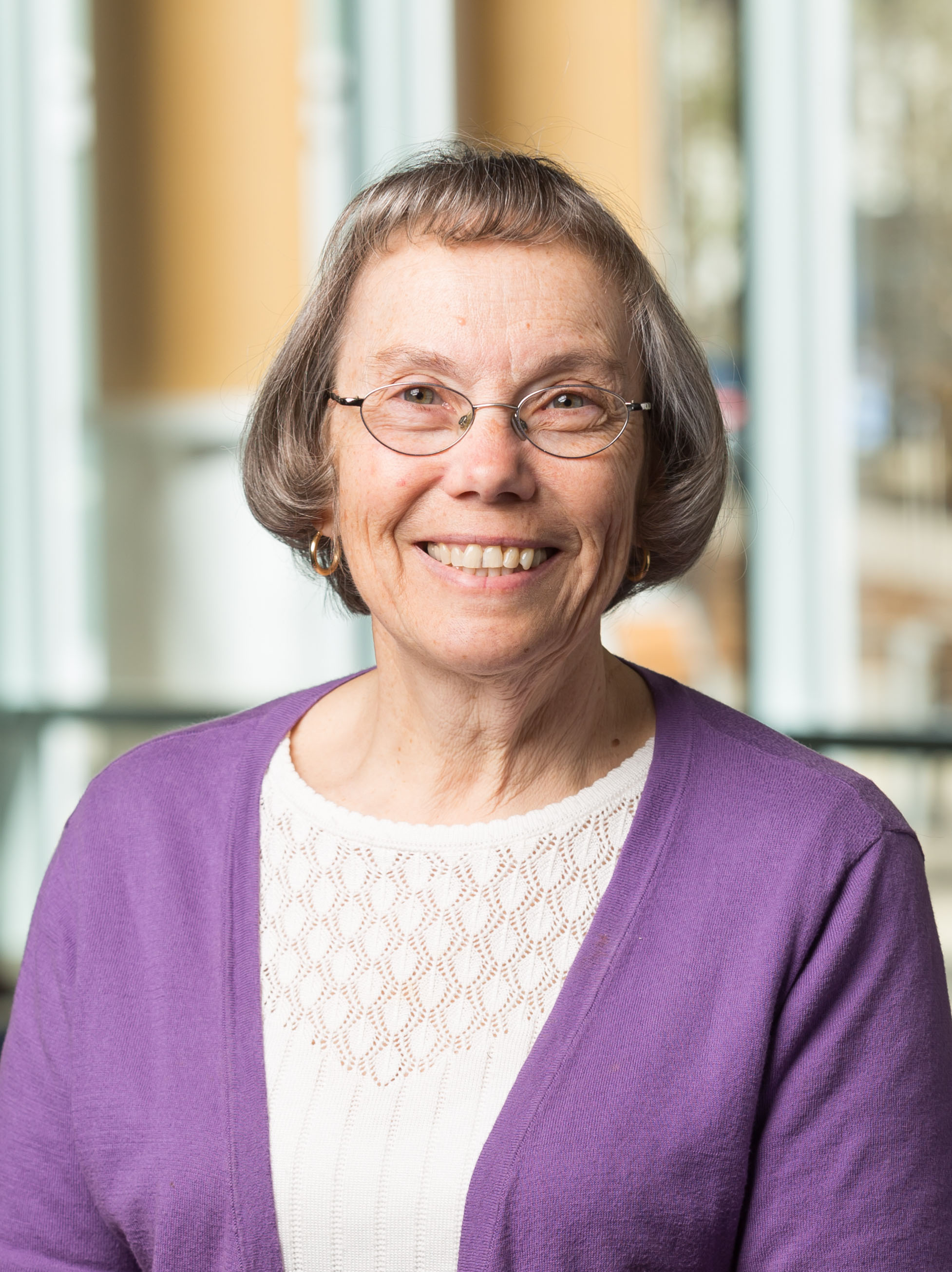
Judy Hebert
Judy Hebert is a retired K–5 science teacher from Chicopee, Mass. She is currently an NGSS@NSTA Curator focusing on Earth science grade 4. Hebert’s work with students has always had an emphasis on outdoor education. Water monitoring, hiking in state parks, and school gardening have been her major interest.
Visit NSTA’s NGSS@NSTA Hub for hundreds of vetted classroom resources, professional learning opportunities, publications, ebooks and more; connect with your teacher colleagues on the NGSS listservs (members can sign up here); and join us for discussions around NGSS at an upcoming conference.
The mission of NSTA is to promote excellence and innovation in science teaching and learning for all.
Future NSTA Conferences
2017 Fall Conferences
National Conference
The creation of a school garden inspired this fourth-grade unit. All students in the school were responsible for planning the garden, as well as for planting, weeding, and harvesting our crops of tomatoes, pumpkins, and carrots. The harvest was shared with the school cafeteria staff, who prepared salad and dessert bar selections for the students, and our fire department staff, who watered our garden in the summer, providing a community connection. All food scraps were composted, and many seeds were harvested, dried, and saved for use in future gardens.
STEM Sims: Explosion Shield
By Edwin P. Christmann
Posted on 2017-07-24
Stem Sims: Explosion Shield
Introduction
STEM Sims provides over 100 simulations of laboratory experiments and engineering design products for applications in the STEM classroom. Explosion Shield, one of the many valuable simulations offered by STEM Sims, allows students to explore how an explosion can affect different types and shapes of materials. Moreover, students can discover which material combination can offer the best protection. This simulation asks participants to test explosives on different materials, which is a very safe and motivating mechanism to cover this interesting topic. STEM Sims: Explosion Shield is aligned with state standards and the following national (NGSS) standards:
• MS-PS3.C. – Relationship Between Energy and Forces
• MS-ETS1.C – Optimizing the Design Solution
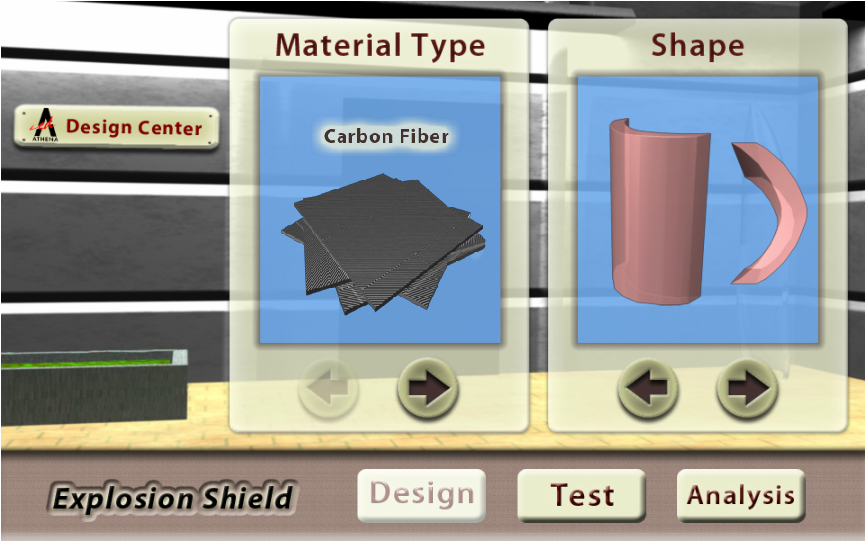
The simulation makes available for students a brochure (see link below) with a pre-assessment quiz and introductory information about the history of explosives and shields. We found that the historical overview gave a nice foundation of content and helped students to learn of advances in technology have changed over time. Moreover, this simulation is a great fit for teachers who want cover learning objectives related to energy and force in a fun and interesting manner that is very safe. Moreover, the deductive reasoning skills that are incorporated will challenge the brightest students to make accurate observations and formulate high-level problem-solving solutions.
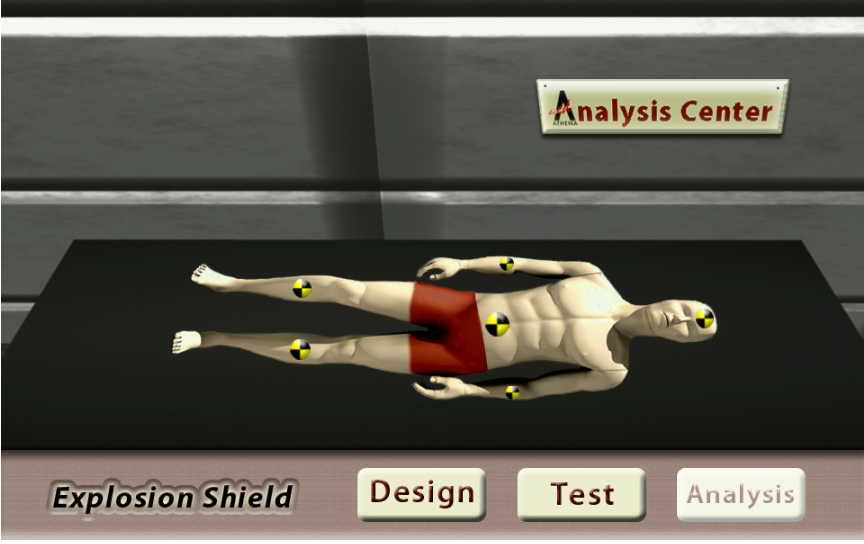
Brochure:
https://stemsims.com/simulations/explosion-shield/brochure/brochure.pdf?version=2017-01-10
Sample Assessment
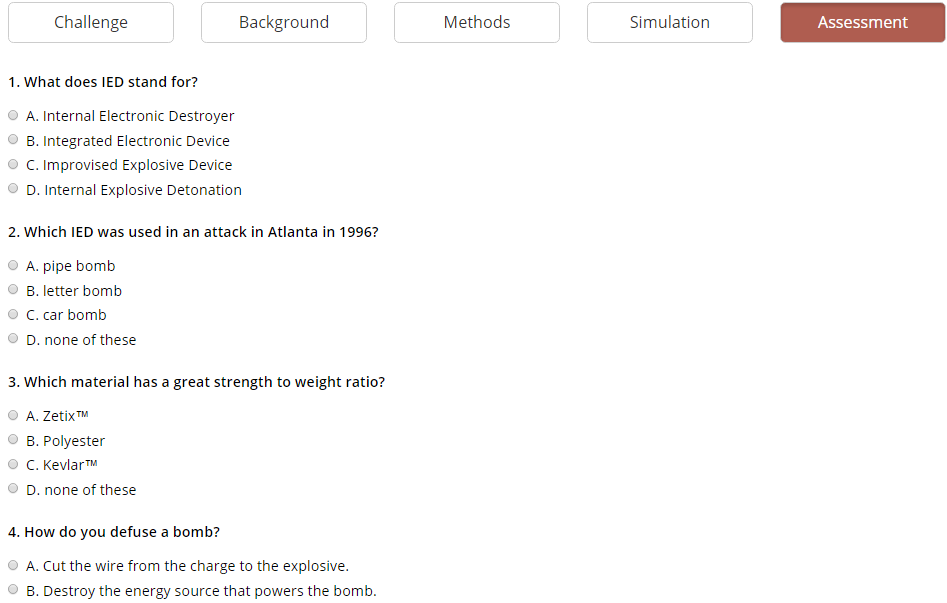
To maximize learning and help teachers in lesson planning, STEM Sims provides two lesson plans for this simulation (see link below):
Lesson 1:
https://stemsims.com/simulations/explosion-shield/lessons/lesson-1.pdf?version=2017-01-10
Lesson 2:
https://stemsims.com/simulations/explosion-shield/lessons/lesson-2.pdf?version=2017-01-10
Conclusion
Explosion Shield is a nice tool for teaching students about how the dangers of energy and force manifested in explosions can be both safe and very interesting. Undoubtedly, the topics covered in this simulation would be too unsafe for actual experimentation. Therefore, by using this simulation, students will be able to explore an area that would otherwise be ignored and at best- speculated. Consider signing-up for a free trial and evaluate this simulation for your future lesson planning and course instruction.
For a free trial, visit:
https://stemsims.com/account/sign-up
Recommended System Qualifications:
• Operating system: Windows XP or Mac OS X 10.7
• Browser: Chrome 40, Firefox 35, Internet Explorer 11, or Safari 7
• Java 7, Flash Player 13
Single classroom subscription: $169 for a 365-day subscription and includes access for 30 students and 100 simulations.
Product Site:
https://stemsims.com/
Edwin P. Christmann is a professor and chairman of the secondary education department and graduate coordinator of the mathematics and science teaching program at Slippery Rock University in Slippery Rock, Pennsylvania. Anthony Balos is a graduate student and a research assistant in the secondary education program at Slippery Rock University in Slippery Rock, Pennsylvania
Stem Sims: Explosion Shield
Learning from experience
By Mary Bigelow
Posted on 2017-07-23
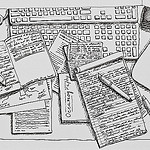 My first year of teaching biology was challenging, but I made it! Do you have any suggestions for what I should do to improve for next year? —C, Virginia
My first year of teaching biology was challenging, but I made it! Do you have any suggestions for what I should do to improve for next year? —C, Virginia
Congratulations for completing your first year! A good way to prepare for next year is to reflect on this one, learning from your experiences.
How did you know a lesson was successful? What did you do when things didn’t go as planned? Were your classroom management routines and procedures effective? How did you deal with disruptive students? How well were you able to access and use the technologies available in your school? Are there any strategies you would like to consider, in terms of instruction, classroom management, or communications?
Were you surprised by any misconceptions or lack of experience among your students? Should you change the amount of time or emphasis invested in some topics? Did you have an effective combination of content, processes and interdisciplinary connections? Do you have any gaps in your own knowledge base?
Were your lesson plans detailed enough to adapt or modify? How well did assignments and projects align to unit goals and lesson objectives? Did your lab activities go beyond cookbook demonstrations to help students develop their own areas of inquiry? Did you provide opportunities for students to reflect on their own learning (e.g., through a science notebook, comparing their work to the rubrics)?
Did your students seem to enjoy learning science? Did you enjoy teaching and learning with them?
Your reflections can be the basis for next year’s goals. It’s tempting to say, “I’ll think about this when school starts. But if you think, reflect, organize, and plan now, you’ll have more time in the fall for getting your second year off to a good start.
New NSTA Book Shines Light on Solar Eclipses
By Carole Hayward
Posted on 2017-07-23
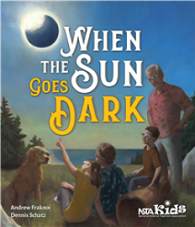 A solar eclipse is coming on Monday, August 21, 2017! What a rare and exciting treat for your students who will get to experience this magical phenomenon. Of course after this amazing event, they will have plenty of questions. They will want to know why, how, and when will it happen again.
A solar eclipse is coming on Monday, August 21, 2017! What a rare and exciting treat for your students who will get to experience this magical phenomenon. Of course after this amazing event, they will have plenty of questions. They will want to know why, how, and when will it happen again.
When the Sun Goes Dark by Andrew Fraknoi and Dennis Schatz is the perfect resource to share with your students. The illustrated book tells the story of a 12-year-old’s experience of learning about solar eclipses from her grandparents.
“Grandma was telling us about the big event during their trip. First, the Sun looked like it had a little bite taken out of it. They had to use special glasses to be able to look at the Sun without hurting their eyes. Then that dark bite out of the Sun got bigger and bigger. When the Sun was almost covered, it looked like a diamond ring for a second. After that, not only the Sun but also the sky turned dark. The birds even stopped singing. The stars came out in the middle of the day. All of the people watching with my grandparents oohed and ahhed because there was a halo of light around the Sun that was very beautiful,” the narrator says.
This story, designed for readers in grades 5-8, explains the extraordinary science behind solar eclipses by using everyday objects such as a lamp, tennis ball, hula hoops, and ping pong balls.
Just as Grandma gives the narrator step-by-step instructions for creating an eclipse with a lamp’s light, teachers can illustrate the same lessons in the classroom. There are also many detailed illustrations showing the different phases of the moon; the constellations the Sun is in front of each month; and the paths of the Moon’s and the Sun’s orbits, for example.
“It turns out that the Sun and the Moon arrive at the crossing points together only twice a year. So we have a kind of ‘eclipse season’ roughly every six months when eclipses of the Sun and the Moon happen somewhere on Earth,” Grandpa explains.
The book discusses how astronomers can predict eclipses hundreds of years in advance and helps students to comprehend complicated astronomical concepts using vocabulary at their reading level.
When the Sun Goes Dark will answer students’ questions and stimulate their curiosity. The book comes with a glossary of terms and additional web resources that will help beginners to gain an in-depth understanding of both solar and lunar eclipses and inspire their interest in our magical solar system.
Fraknoi and Schatz are award-winning experts in astronomy and science education, and the authors of the NSTA book Solar Science: Exploring Sunspots, Seasons, Eclipses, and More.
Read a sample chapter here. This book is also available as an e-book.
Save
Save
 A solar eclipse is coming on Monday, August 21, 2017! What a rare and exciting treat for your students who will get to experience this magical phenomenon. Of course after this amazing event, they will have plenty of questions.
A solar eclipse is coming on Monday, August 21, 2017! What a rare and exciting treat for your students who will get to experience this magical phenomenon. Of course after this amazing event, they will have plenty of questions.
Ed News: The Role Of Science In Boosting Outcomes For English Learners
By Kate Falk
Posted on 2017-07-21

This week in education news, students attending high-poverty schools have fewer opportunities than students attending low-poverty schools; K-12 school spending got caught up in budget standoffs this year; the number of girls taking AP computer-science exams more than doubled; writing improves all learning; and a South Dakota science teacher selected as a national ambassador.
The Role Of Science In Boosting Outcomes For English Learners
All too often, English learners (ELs) do not receive the same educational opportunities as their non-EL peers. This pattern manifests in a variety of ways, including the disparate levels of access that ELs have to high-quality science instruction. Indeed, a recent Education Trust-West study of California school districts found that ELs are significantly underrepresented in advanced science courses throughout the state. The report also notes that ELs consistently score lower than the rest of the population on statewide science assessments at all grade levels. Click here to read the article featured in New America.
‘STEM Deserts’ In The Poorest Schools: How Can We Fix Them?
Students attending high-poverty schools tend to have fewer science materials, fewer opportunities, and less access to the most rigorous mathematics classes, like calculus and physics, than students attending low-poverty schools, a new analysis points out. That means that they’re less likely to encounter real-world problem-solving that characterizes advanced work in those fields—as well as the most rigorous content that serves as a benchmark for beginning college majors or minors in those fields. Click here to read the article featured in Education Week.
In My Classroom, Students Are The Teachers—Here’s Why It Works
We have all heard the words, “don’t give up!” It is a constant reminder to keep going, to persevere in tough situations and when things aren’t working well, try again. Frequently, students in my programming class get frustrated when working on a project and debugging code. As a teacher, how do you keep them inspired to work through their challenges? Click here to read the article featured in eSchool News.
K-12 Funding Entangled in States’ Budget Drama
K-12 school spending this year got caught up in budget standoffs that, in some states, led to brief government shutdowns. And the drama isn’t over yet. Though most state legislatures now have wrapped up business for the year, several this summer still are trying to design new revenue models, K-12 funding formulas, and—in the case of Kansas and Washington—awaiting court approval to assure their new school spending plans are constitutional. Click here to read the article featured in Education Week.
Number Of Girls Taking AP Computer-Science Exam More Than Doubles
More girls than ever took an AP computer-science exam this year, Seattle nonprofit Code.org announced Tuesday, calling the results “incredible.”Code.org crunched the numbers from the AP College Board, which shows that 29,708 girls in the U.S. took an Advanced Placement computer science exam this year, more than double the number from 2016. Girls made up about 27 percent of the 111,262 students who took an AP computer-science exam in 2017. Click here to read the article featured in the Seattle Times.
If We Fix Student Teaching, Will We Fix Teacher Shortages?
The president of the National Council on Teacher Quality presented what she sarcastically called a “radical” solution for both improving the pipeline of new teachers and filling specific teacher shortages: “Fix student teaching.” “There’s a misalignment between what’s needed [in districts] and what’s provided out of higher ed,” said Kate Walsh, speaking July 17 at an annual gathering of state teachers of the year.” Click here to read the article featured in Education Week.
Why Writing Doesn’t Just Improve Learning, It Improves All Learning-Including STEM
Writing is used to assess student learning more often than it is used to facilitate learning. We talk about writing as a product for assessment, a subject where paragraphs and commas are taught, or a skill that one either has developed or lacks. Rarely do we hear people, even teachers, discuss writing as a process for learning. Click here to read the article featured in eSchool News.
How States Can Boost Science Learning, Thanks To ESSA
Science education advocates are among those cheering the new federal education law known as the Every Student Succeeds Act: It’s an opportunity to get science on the radar screen in a way they couldn’t under ESSA’s predecessor. The former law didn’t count science tests towards anything, thereby relegating the subject, in many advocates’ eyes, to second-tier status. But under ESSA, states have a lot more flexibility to emphasize science in particular, and more generally, content in the STEM fields of science, technology, engineering, and math. Click here to read the article featured in Education Week.
MHS Science Teacher Selected As National Ambassador
A Mitchell educator has been selected as a national ambassador, tasked with the goal of empowering science teachers across the country. Julie Olson was selected as one of 10 math and science teacher leaders to serve as a 2017 STEM Teacher Ambassador, according to the National Science Teachers Association (NSTA) and the National Council of Teachers of Mathematics (NCTM). STEM stands for science, technology, engineering and math. Click here to read the article featured in The Daily Republic.
Local Teacher Tapped As STEM Teacher Ambassador
A Williamsville science teacher has been named as a national 2017 STEM Teacher Ambassador. WBFO’s senior reporter Eileen Buckley says the middle school teacher is one of ten math and science teachers selected nationwide. “It’s important that teachers are at the table – that as teachers our opinions are heard,” said Kenneth Huff, science teacher at Mill Middle School in Williamsville. Click here to listen to the segment featured on WBFO.
The Power of Story In The Classroom
There is something incredibly compelling about a well-told story. In fact, it is one of the most powerful tools we possess. For most of human history, oral stories were the primary way that knowledge and tradition were passed down through generations. But the modern classroom is often devoid of stories. Information is most often delivered through bland lectures and textbooks, only to be discarded. Click here to read the article featured in Education Week.
Stay tuned for next week’s top education news stories.
The Communication, Legislative & Public Affairs (CLPA) team strives to keep NSTA members, teachers, science education leaders, and the general public informed about NSTA programs, products, and services and key science education issues and legislation. In the association’s role as the national voice for science education, its CLPA team actively promotes NSTA’s positions on science education issues and communicates key NSTA messages to essential audiences.
The mission of NSTA is to promote excellence and innovation in science teaching and learning for all.
Follow NSTA

This week in education news, students attending high-poverty schools have fewer opportunities than students attending low-poverty schools; K-12 school spending got caught up in budget standoffs this year; the number of girls taking AP computer-science exams more than doubled; writing improves all learning; and a South Dakota science teacher selected as a national ambassador.
Math is integral to early childhood STEM learning
By Peggy Ashbrook
Posted on 2017-07-19
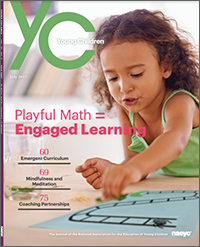
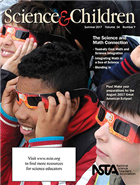 July has brought my happy place (where the worlds of early childhood education and science education overlap) to my mailbox in the form of the 2017 summer journals from the National Science Teachers Association (NSTA) and the National Association for the Education of Young Children (NAEYC): Science and Children and Young Children. Both issues of these journals focus on math and the resources are such good reading in preparation for teaching! NAEYC’s Teaching Young Children (TYC) also has resources about early math.
July has brought my happy place (where the worlds of early childhood education and science education overlap) to my mailbox in the form of the 2017 summer journals from the National Science Teachers Association (NSTA) and the National Association for the Education of Young Children (NAEYC): Science and Children and Young Children. Both issues of these journals focus on math and the resources are such good reading in preparation for teaching! NAEYC’s Teaching Young Children (TYC) also has resources about early math.
A friend who is a former early childhood educator was telling me about her grandchild, sharing how smart he is because at 2 years old he can count to 25. Knowing her and her daughters, I have no doubt her grandchild will grow up to be a deep thinker, capable of many achievements and contributions to society but she and I both know his ability to recite numbers in order does not reveal the depth of his understanding of the meaning of numbers.
When parents, grandparents, and other educators share their excitement about children’s achievements we can cheer and offer resources that support both the children’s learning and the adult’s learning about how children learn. I might say, “Wow, counting to 25! Here are some resources on early math development you may enjoy or already know about.”
I’m using these resources to help me understand what children may know and be able to do at ages of 2-5. Add your favorite resources in a comment to help me learn more.
The National Council of Teachers of Mathematics’ (NCTM) October 2013 position statement, “Mathematics in Early Childhood Learning” states, “The big ideas in mathematics must include mathematical experiences that incorporate mathematics content in areas such as number and operations, geometry, algebraic reasoning, and measurement,” and, “Early childhood educators should actively introduce mathematical concepts, methods, and language through a variety of appropriate experiences and research-based teaching strategies.”
The NCTM Principles and Standards for School Mathematics has both content and process standards, defined in grade bands beginning with PreK-2. For example, part of the preK-2 expectations in content standard “Number and Operations” states, “In pre-K through grade 2 each and every student should- count with understanding and recognize “how many” in sets of objects.” And a PreK-2 expectation in content standard “Understand patterns, relations, and functions” states, “In pre-K through grade 2 each and every student should– sort, classify, and order objects by size, number, and other properties;
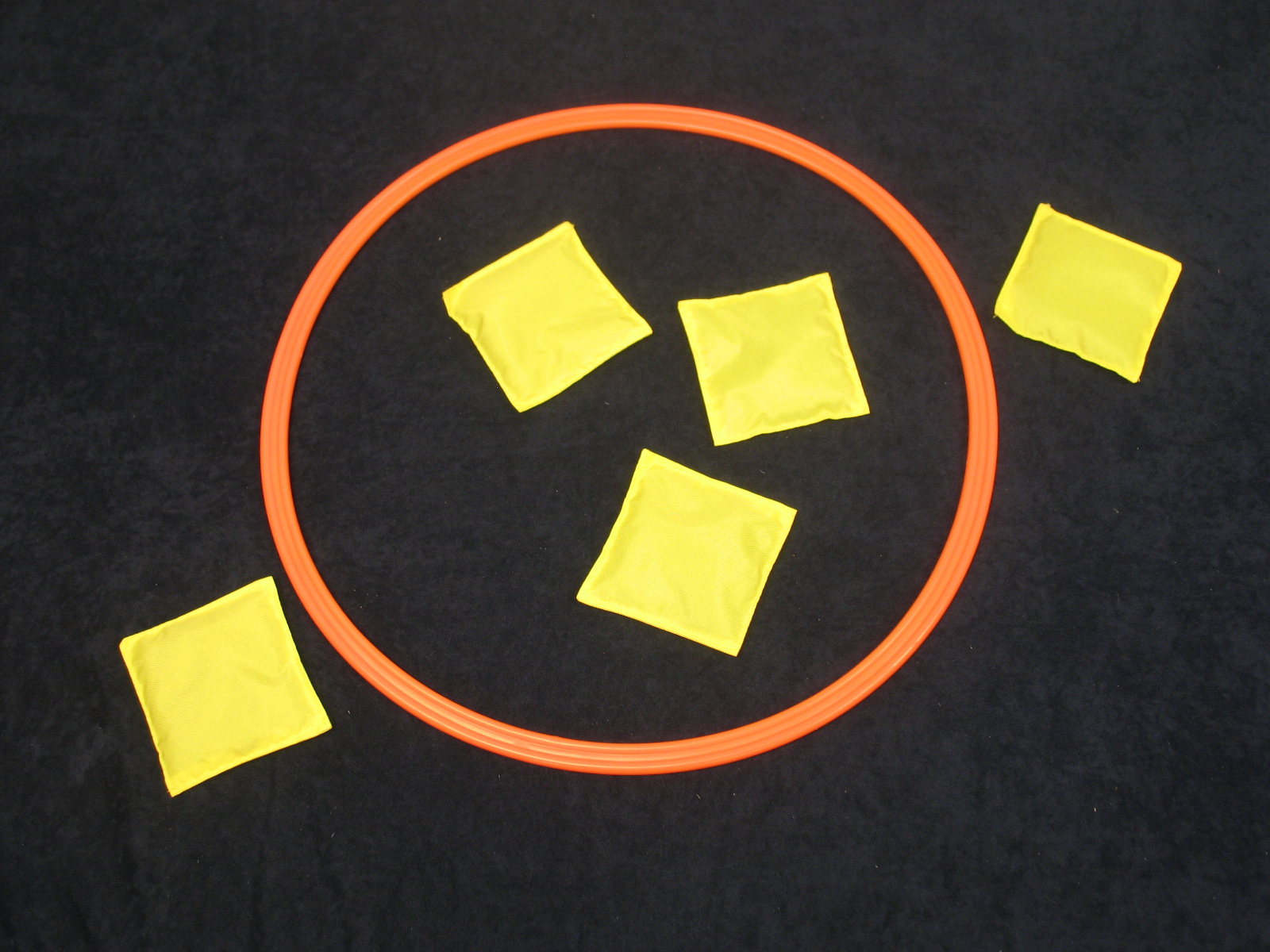 Playing games is a time-tested and fun way to include math skill building in early childhood programs.
Playing games is a time-tested and fun way to include math skill building in early childhood programs.
Regents’ Center for Early Developmental Education’s Games page, developed in collaboration with Dr. Constance Kamii of the University of Alabama at Birmingham. The Head Start and the Common Core Standards are listed for each game, with clear photos and instructions and illustrations to download.
Next Generation Preschool Math, a project of Education Development Center’s (EDC) Center for Children and Technology, SRI International, and First 8 Studios at WGBH led to the development of a curriculum that includes eight tablet apps that are games that can be played individually or collaboratively and classroom activities. A teacher’s guide (http://first8studios.org/gracieandfriends/guide/) includes “The Basics” (defining the units subitizing and equipartition and explaining why they are important) and lesson plans for engaging children with these concepts through both digital and traditional classroom activities.
 EDC’s Games for Young Mathematicians project researches the use of games to foster early mathematical learning in preschool settings. See their list of suggestions for published math picture books.
EDC’s Games for Young Mathematicians project researches the use of games to foster early mathematical learning in preschool settings. See their list of suggestions for published math picture books.
The Erikson Institute Early Math Collaborative’s video series, Focus on Play, illustrates how educator care givers can help infants and toddlers explore precursor concepts of math, “concepts that anchor a child’s mathematical thinking and are essential for the growth of further mathematics.”  See descriptions of the “Big Ideas of Early Mathematics” from The Early Math Collaborative’s book, Big Ideas of Early Mathematics and follow the links to learn more about each idea in written descriptions and Focus on the Child video clips from one-on-one interviews with individual children that reveal children’s thinking. It’s interesting to see how, after asking a question, the teachers and researchers wait for a relatively long time for children to answer.
See descriptions of the “Big Ideas of Early Mathematics” from The Early Math Collaborative’s book, Big Ideas of Early Mathematics and follow the links to learn more about each idea in written descriptions and Focus on the Child video clips from one-on-one interviews with individual children that reveal children’s thinking. It’s interesting to see how, after asking a question, the teachers and researchers wait for a relatively long time for children to answer.
 Dr. Doug Clements and Dr. Julie Sarama, professors at the University of Denver, shared their work in a free webinar, “The Path for Math in Early Childhood: The Learning Trajectories Perspective” (June 15, 2016 Early Childhood Investigations). These learning trajectories include three components: “the mathematical goals, developmental progressions of children’s learning, and educational activities and teaching strategies (based on finding the mathematics in, and developing mathematics from, children’s everyday activity).” Read more of their work, “Math in the Early Years: A Strong Predictor for Later School Success,” in The Education of the States’ October 2013 newsletter. http://www.earlychildhoodwebinars.com/wp-content/uploads/2016/04/Math-in-the-Early-Years.pdf
Dr. Doug Clements and Dr. Julie Sarama, professors at the University of Denver, shared their work in a free webinar, “The Path for Math in Early Childhood: The Learning Trajectories Perspective” (June 15, 2016 Early Childhood Investigations). These learning trajectories include three components: “the mathematical goals, developmental progressions of children’s learning, and educational activities and teaching strategies (based on finding the mathematics in, and developing mathematics from, children’s everyday activity).” Read more of their work, “Math in the Early Years: A Strong Predictor for Later School Success,” in The Education of the States’ October 2013 newsletter. http://www.earlychildhoodwebinars.com/wp-content/uploads/2016/04/Math-in-the-Early-Years.pdf
Will you add to the number of resources listed here? What early math resource makes sense to you?
Safety Blog
Purchasing the Safest Lab Chemicals
By Kenneth Roy
Posted on 2017-07-17
Prior to the new school year, most science teachers select and order their lab chemicals. Before placing an order, however, teachers should consider the health risks associated with using hazardous chemicals in the classroom laboratory.
Making the right purchase
To purchase the least chemically hazardous material possible, science teachers should first determine whether the hazard is health, physical, or environmental by running a hazards analysis. This involves:
• securing and reviewing the Safety Data Sheet (i.e., Section 2: Hazard(s) Identification, Section 7: Handling and Storage, Section 8: Exposure Controls/Personal Protection, and Section 11: Toxicological Information),
• checking the appropriateness of the chemical’s use on Rehab the Lab’s school chemical list,
• reaching out to the chemical supplier for additional information on the chemical’s potential hazards,
• reading professional publications such as the Journal of Chemical Health and Safety for health and safety information on chemical hazards, and
• checking out the chemistry listserv on NSTA’s listservs.
Next, complete a risks assessment. Some risks related to chemicals might include:
• breathing in vapors, gases, and particulates;
• exposure to skin by splashing, dipping, and airborne dust;
• exposure to chemicals by sticking fingers in the mouth or eating or drinking;
• exposure to eyes from vapor, gasses, particulates, or splashes; or
• puncture of the skin.
Depending on the chemical, further safety actions might need to be taken. Check out the National Institute for Occupational Safety and Health’s Hierarchy of Controls (see image below) to take the appropriate action.

Additional considerations
Science teachers also need to consider several issues that may arise from using hazardous chemicals. First, they need to be aware of long-term exposure to hazardous chemicals, which can cause health complications. Appropriate ventilation in the lab, reading information in the Safety Data Sheet (SDS), and using personal protective equipment (e.g., particulate respirator) can help prevent long-term exposure. Employees usually have a right to be tested for exposure to hazardous chemicals and may ask their employer to have a worksite tested by a licensed industrial hygienist. If female employees or students who are pregnant will be working in your lab, be sure to read the SDS for information about reproductive toxins, harm to the fetus, and more.
Additionally: If you or a student is accidentally exposed to a hazardous chemical, read sections 3 (Hazards Identification Section), 5 (Fire and Explosion Data), 6 (Accidental Release Measures), and 10 (Stability and Reactivity Data) of the SDS. Finally, consider the storage and disposal of hazardous chemicals. The SDS Section 7 (Handling and Storage), local school policies, the Occupational Safety and Health Administration, the Centers for Disease Control and Prevention, the University of Iowa, and the National Fire Protection Association all have recommendations for storing hazardous chemicals. Before disposing of the chemicals, read section 13 (Disposal Considerations) of the SDS and check with the school facilities manager for information on how the chemical should be appropriately disposed of.
Submit questions regarding safety in K–12 to Ken Roy at safesci@sbcglobal.net, or leave him a comment below. Follow Ken Roy on Twitter: @drroysafersci.
NSTA resources and safety issue papers
Join NSTA
Follow NSTA
Prior to the new school year, most science teachers select and order their lab chemicals. Before placing an order, however, teachers should consider the health risks associated with using hazardous chemicals in the classroom laboratory.
Making the right purchase
To purchase the least chemically hazardous material possible, science teachers should first determine whether the hazard is health, physical, or environmental by running a hazards analysis. This involves:


